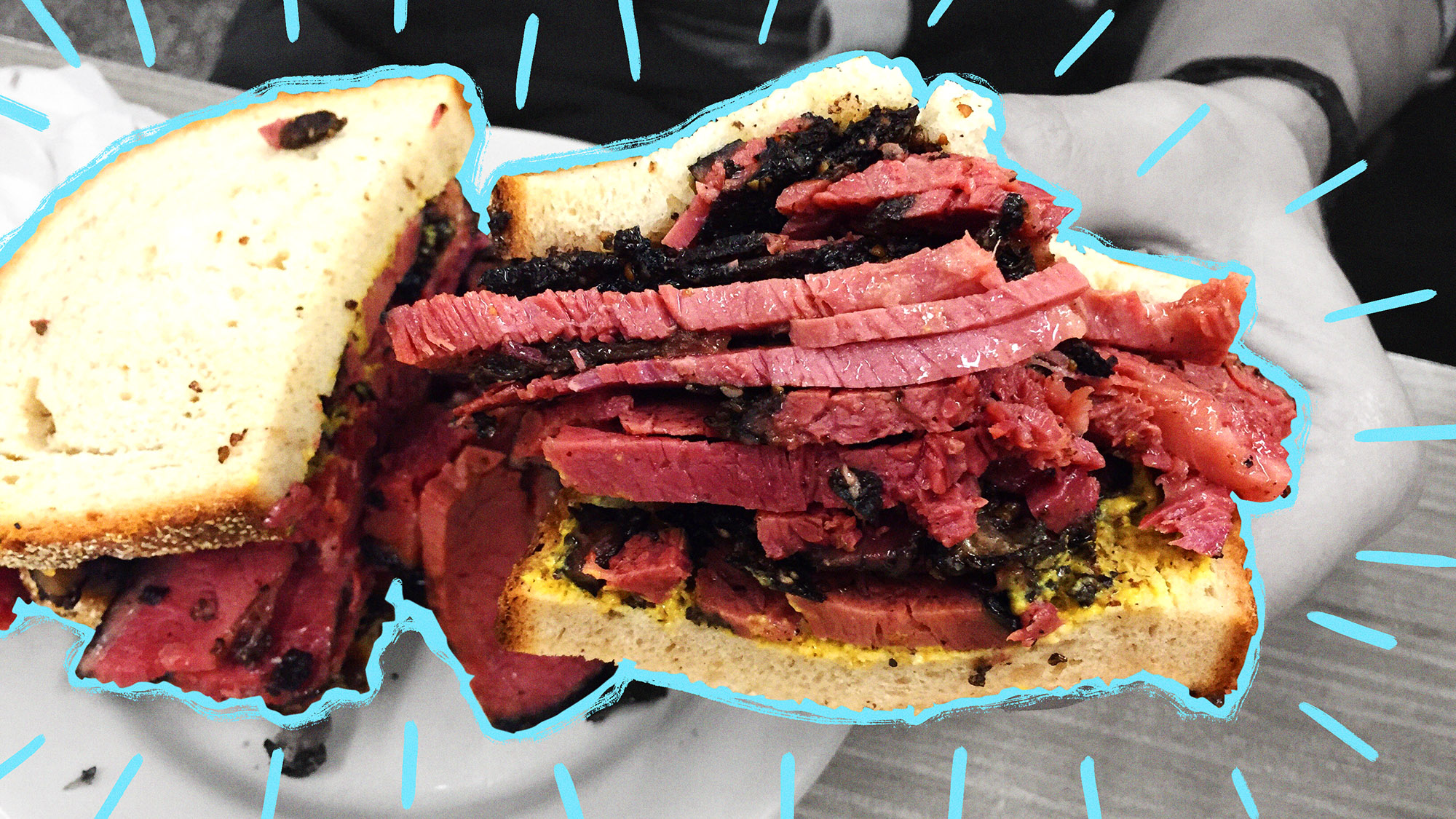Smoke A Whole Dang Pastrami, Because You're Worth It
There's no better feeling for the home cook than making a dish that comes out just like the version you fell in love with—the real-deal "oh, dang, that is exactly what I was shooting for" reaction. I'm here to tell you that when it comes to pastrami, the undisputed deli champion, it's not only possible to make your own, but you'll feel so mysteriously hyper-competent that I hope it doesn't mess up your ego and make you an asshole.
The goal here is no less than total delicatessen domination: the trademark give of a perfectly-steamed hunk of brisket, the unmistakable pink hue, the jiggle, and the salty-rich explosion of peppery, beefy flavor. It's doable, it's delicious, and the hardest part is waiting. (It is hard; we're talking many days of abject pastrami pining.) This is the real deal, and you're going to get all the credit.

DIY Smoked Whole Pastrami
- 1 beef brisket flat, 5-8 lb. (the point is spectacularly decadent, but best to learn on the flat end of things, for ease of sandwich slicing)
- 1/2 gallon room-temperature water
- 1/2 gallon ice water
- 3/4 cup salt
- 3/4 cup sugar
- 4.5 tsp. (about 25 grams) curing salt*
- 1/3 cup pickling spice
- 6 cloves garlic, peeled and smashed
- 2 bay leaves
- 3-4 crushed juniper berries (optional)
- 1/3 cup of honey
- Yellow mustard, to rub
- 1/4 cup whole black peppercorns, ground (Lampong are my favorite)
- 1/4 cup whole coriander seeds, ground
* You're going to need curing salt (salt mixed with sodium nitrite, also called Instacure #1 or Prague Powder #1) to get the trademark pink pastrami color. There are curing salt-less pastrami recipes out there, but they're not going to fool a surly deli worker any time soon. You can grab more curing salt than you'll ever need for less than 10 bucks on Amazon, and if you've got a fancy spice shop or butcher in your area, chances are they carry it. Keep it on a high shelf, away from kids, and absolutely do not ever taste it, not even to spite me for telling you not to.
Combine the room-temperature water (leave the ice water aside), salt, sugar, curing salt, pickling spice, garlic, bay leaves, and juniper in a large pot. Bring to a boil, remove from heat, and stir in the honey. When that's dissolved, add the ice water and let the brine cool completely.
Place your brisket in a large (but still semi-snug) storage container and pour the brine over. Weigh down the brisket with a plate to keep it submerged, seal the container tightly, and refrigerate, opening to flip the meat daily. (You can brine for 5-7 days, but honestly, 10-12 is your sweet spot. Once, I tried brining for 21 days—I got busy mid-cure and also SCIENCE EXPERIMENT!—and that was absolutely too long.
Twenty-four hours before smoking, remove the brisket from the brine and pat it dry with paper towels. Leave it to dry on a rack in the fridge overnight.
The next morning, rub the brisket with a very thin layer of yellow mustard and absolutely murder it with the coriander/pepper combo. (There's no such thing as too much pepper on a brisket and I will die on that hill.)
Smoke the brisket for three hours at around 225 degrees Fahrenheit, via electric/barrel/Weber/stovetop/whatever while you prepare for the final step.
Once this hunk of beef absorbs all that good smoke flavor, we're going to finish it by steaming—just like the big boys.
If you have a pan with a steamer-rack insert, perfect. Tightly seal it with foil and steam for 5-6 hours, until it's jiggly and amazing (you'll know the trademark jiggle after doing this once or twice). Alternately, if you've got an oven-safe dish, fill the bottom with boiling water and place a rack on top, then the brisket, and seal with foil. Heat the oven at 250 degrees Fahrenheit for a slightly longer amount of time.
Remove to a large cutting board, cut into thick and generous slices, and serve piled high on rye bread with mustard and a pickle on the side. Leftovers heat up well in a low oven, on a griddle, or sealed in a plastic bag under hot water in an office kitchen if you're truly desperate.
